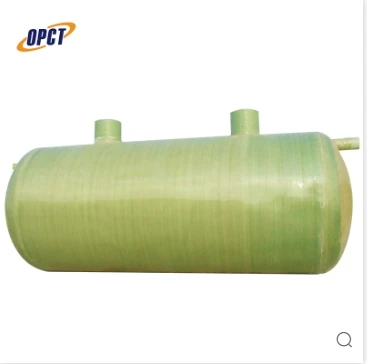In the realm of modern engineering and home utilities, the stainless steel (SS) water storage tank has become an indispensable component. Its application spans various sectors, from residential to industrial settings. The selection of such a tank mandates an understanding not just of the capacity, but also of the material quality, design features, and installation nuances which collectively contribute to optimal performance and longevity.

Stainless steel water storage tanks are celebrated for their remarkable durability and corrosion resistance. Unlike plastic or concrete alternatives, SS tanks hold up exceptionally well against environmental factors such as UV radiation, temperature fluctuations, and aggressive weather conditions. They are crafted predominantly from high-grade stainless steel, which ensures their robustness and endurance. This advantage is particularly crucial in industrial contexts where tanks are frequently exposed to harsh conditions that could degrade lesser materials.
The key to leveraging a stainless steel water storage tank effectively lies in understanding its engineering precision. Expertise in selecting the appropriate grade of stainless steel based on the storage needs—whether potable water, chemicals, or other liquids—is paramount. Typically, 304 and 316 stainless steel grades are widely used, where the choice between them depends on the specific environmental exposure and the chemical composition of stored contents. These tanks often feature food-grade materials that ensure water purity and meet stringent health safety standards, boosting their trustworthiness among consumers and health regulatory bodies alike.

Installation of these tanks should never be an afterthought. Professional installation is essential to forestall potential structural issues. It's advisable to engage with certified technicians who possess comprehensive knowledge regarding foundation preparations, weight distribution, and integral connections to ensure leak-proof performance. Proper installation mitigates risks related to seismic activities, which is a significant concern in regions prone to earth movements.
Another advantage of stainless steel tanks is their minimal maintenance requirements. Owing to their non-porous surfaces, they resist bacterial growth and contamination. Regular inspections, however, are still recommended to preemptively identify and correct minor issues that could escalate into significant problems. Employing professional inspection services underpins the tanks' credibility as a reliable water storage solution.
ss water storage tank
With growing environmental concerns, stainless steel water storage tanks are increasingly valued for their sustainability. The material itself is recyclable, reducing the ecological footprint. Their longevity also means fewer resources expended over time compared to frequent replacements of less durable materials. This aligns with global trends toward sustainable practices in construction and utility management.
Choosing the right SS water storage tank involves considering factors such as capacity needs, available space, and budget constraints. Whether for residential or industrial purposes, a tailored solution ensures maximum efficiency and ROI. Opting for a reputable manufacturer not only guarantees quality but also enhances the authoritative standing of the product in any setting.
Finally, engaging with user testimonials and case studies provides invaluable insights that further emphasize the tanks' real-world effectiveness and reliability. Trusted brands often have a plethora of success stories that underscore their expertise and highlight the practical benefits their products deliver. Such narratives reinforce consumer confidence and affirm the tanks' role as a cornerstone of modern water management solutions.
In conclusion, the deployment of stainless steel water storage tanks represents a synthesis of durability, expert engineering, and reliable performance. These attributes not only meet immediate storage needs but also contribute to long-term utility management strategies that prioritize safety, efficiency, and environmental responsibility.




